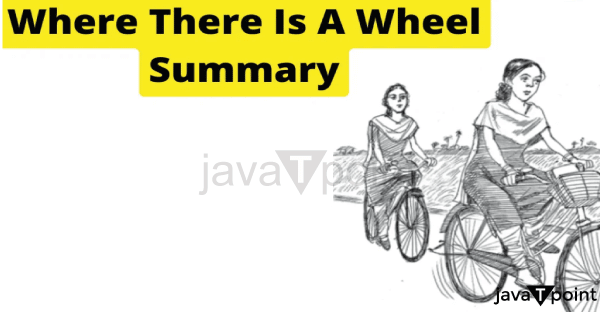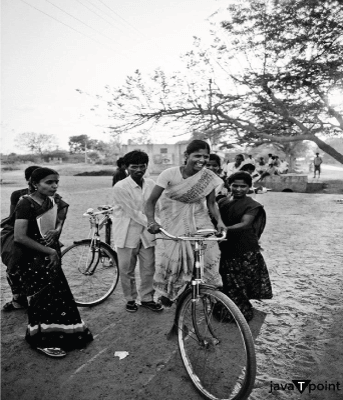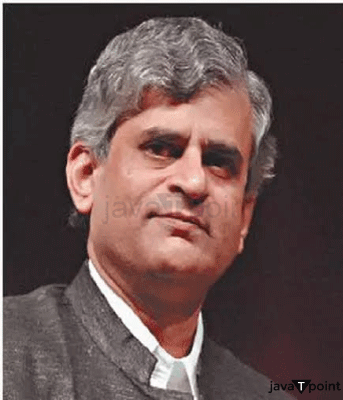Where There is a Wheel SummaryIntroductionIn P. Sainath's eye-opening summary titled "Where There Is a Wheel," the profound significance of wheels in our society is brought to the forefront. This captivating exploration delves into the intricate relationship between wheels and mobility, highlighting the challenges marginalized communities face when accessing this fundamental means of transportation. Through a thought-provoking analysis, Sainath urges us to reevaluate the existing disparities and work towards a more inclusive future. 
The summary emphasizes that wheels have been pivotal in empowering individuals and societies throughout history. The invention of wheels marked a monumental breakthrough, revolutionizing transportation and catalyzing the progress of civilizations. Faster trade, cultural exchange, and the ability to cover vast distances were made possible by this remarkable invention. The "Where There Is a Wheel" summary urges us to recognize the transformative power of wheels as catalysts for societal growth and development. However, amidst the awe-inspiring achievements associated with wheels, the summary sheds light on the wheel divide in our society. It exposes the unequal distribution of wheels, with marginalized communities often facing significant barriers to accessing this primary mode of transportation. Socioeconomic disparities further exacerbate this divide, perpetuating cycles of poverty and limiting opportunities for upward mobility. The summary calls for inclusive policies that bridge this gap, highlighting the urgent need for systemic changes to ensure equal access to wheels for all. Summary of the story"Where There is a Wheel," a book by renowned journalist and novelist P. Sainath, is intriguing and thought-provoking. The heartland of rural India is brought to life for readers in this gripping tale, as the lives of millions of farmers are intertwined with the machinery of agriculture. The book delves deeply into the lives of these farmers, graphically and movingly showing their difficulties, goals, and hopes. Sainath's account is a personal study and a powerful portrayal of the nation's ongoing rural crisis. Throughout the book, Sainath blends first-hand accounts, interviews, and statistical information to paint a nuanced and complicated picture of the rural catastrophe. He highlights the inspiring stories of farmers battling adversity, including Ramu, a smallholder farmer drowning in debt, and Kalyani, a widow fighting for land rights in a patriarchal society. Sainath draws attention to the numerous challenges farmers face, including unscrupulous lending methods that increase their debt, the terrible effects of crop failures brought on by irregular weather patterns, and the encroachment of industrialization on rural areas. He looks into the problems with land dispossession, which happens when farmers are forced to give up their ancestral holdings for business operations, leaving them no land or place to live. The apparent injustices and disparities in the Indian agriculture industry are also covered in the book. Sainath clarifies the widening income gap, the lack of government support for smallholder farmers, and the dominance of big corporations in deciding agricultural policy. "Where There is a Wheel" is a call to action that asks readers to confront the unflinching reality that farmers live in and address the structural issues that make their suffering worse. Sainath's passionate writing serves as a reminder of the resiliency and fortitude of rural people and the urgent need for equitable and long-lasting solutions. Last but not least, "Where There is a Wheel" offers a gripping and insightful analysis of the challenges encountered by farmers in rural India. Thanks to Sainath's captivating writing, interspersed with the tales of people like Ramu and Kalyani, this book is a must-read for those who want to appreciate the complexities of the issue and the urgent need for change. 
Themes Explored in the StoryP. Sainath's "Where There is a Wheel" examines the agrarian crisis in rural India, focusing on numerous themes underlying farmers' hardships. Sainath repeatedly emphasizes these themes throughout the book, highlighting the intricacies and systemic problems contributing to the crisis. She does this with a sharp eye for detail and a thorough mastery of the subject. The effects of economic inequality are one of the major topics examined. Sainath demonstrates how a few wealthy companies and people control the agricultural economy while most farmers struggle to make ends meet, exposing the rising gap between the rich and the poor. This issue highlights the underlying inequalities and power disparity that support the marginalization of farmers and the persistence of poverty. The exploitation of farmers by financial systems is a further important subject. Sainath investigates the predatory loan schemes that ensnare farmers in debt cycles and frequently result in catastrophic outcomes, including land loss, bankruptcy, and suicide. This theme emphasizes financial institutions' exploitation of poor farmers and the urgent need for measures to stop them. The book also examines farmers' environmental difficulties, focusing on how climate change and unpredictable weather patterns affect crop yield. Sainath emphasizes farmers' susceptibility to crop failures, floods, and droughts, highlighting the pressing need for sustainable agricultural practices. In "Where There is a Wheel," social and gender inequity is also covered. Sainath draws attention to how marginalized women are in rural areas, how little access they have to resources and decision-making, and how they fight for land rights and empowerment. Sainath emphasizes the value of gender equality and the necessity of confronting patriarchal traditions that support discrimination and obstructs progress through personal accounts and interviews. Finally, "Where There is a Wheel" addresses several significant issues related to the agricultural problem in rural India. Readers thoroughly grasp farmers' complicated problems because of Sainath's philosophical investigation of economic imbalance, financial exploitation, environmental difficulties, and social inequity. This stimulating book is a call to action that urges society to address these issues and work towards sustainable solutions that improve rural communities and alter the agricultural environment. Conclusion
"Where There is a Wheel" by P. Sainath is a unique and enlightening work that, in conclusion, highlights the complex issues relating to the agrarian crisis in rural India. To illuminate the difficulties faced by farmers, Sainath skillfully combines personal accounts, facts, and analysis. She does this with a strong eye for detail and a thorough understanding of the subject. Sainath reveals the pervasive problems that contribute to the agrarian crisis through themes of social and gender injustice, financial exploitation, environmental problems, and economic inequality. Her detailed exploration prompts Readers to consider the fundamental shortcomings in the agriculture system and the pressing need for reform. Furthermore, "Where There is a Wheel" goes beyond simple observation because Sainath humanizes the experiences of farmers via fascinating storytelling and meticulous research, giving a voice to those frequently marginalized and unheard. Through their stories, readers understand the grit and toughness of rural communities in the face of hardship. This book is a potent call to action that forces society to address farmers' challenging reality and work towards long-term solutions. Sainath encourages readers to support laws that support an equitable distribution of resources, the empowerment of marginalized communities, and ecological sustainability by sensitively and in-depth addressing the subjects. The story "Where There is a Wheel" is a testament to storytelling's potential to raise consciousness and effect social change. It is a must-read for anybody wanting to learn more about farmers' difficulties in rural India. It serves as a rallying cry for group action to build a more just and sustainable future for all.
Next TopicThe Serang of Ranganji Lesson Summary
|
 For Videos Join Our Youtube Channel: Join Now
For Videos Join Our Youtube Channel: Join Now
Feedback
- Send your Feedback to [email protected]
Help Others, Please Share









